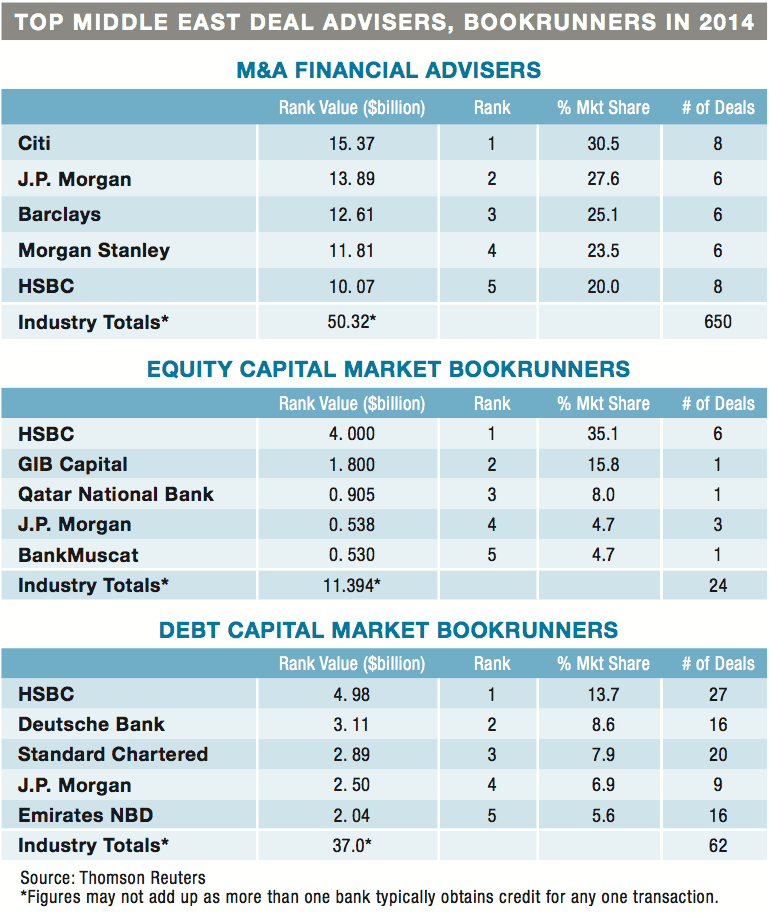Regional Report | Latin America

Colombia, Chile, Mexico and Peru are handling the drop in commodities prices better than the rest of Latin America.
The party may be over for many Latin American countries. A long period of exceptionally high commodity prices and low-cost borrowing has ended, but the good news is that the four countries of the Pacific Alliance—the trading union among Chile, Colombia, Mexico and Peru—are well equipped to weather a period of mediocre economic growth. Most of them are moving forward, after recently-approved economic reforms, and starting to make big investments in infrastructure.
The four countries, which together have a population of nearly 200 million people, have the highest expected growth rates in the region, outperforming such larger but less investor-friendly countries as Argentina, Venezuela and, to some extent, Brazil. Apart from Colombia, whose economy is expected to be heavily hit by the fall in oil prices, Peru, Chile and Mexico should do better in 2015 than in 2014, recovering part of their expansionary mojo.
“A region as exceptionally specialized in commodities as South America went through ten years of exceptional circumstances: [They benefited from] extraordinarily high commodities prices and, [since] 2009−2010, also [took] advantage of loose financial conditions. This is unraveling,” said Alejandro Werner, director of the Western Hemisphere department of the International Monetary Fund (IMF) at a public debate in January.

From mid-2014 to January 2015, the price of oil more than halved. Copper was trading at levels unseen since 2006, with the exception of a quick fall and recovery in 2009. In the opinion of Werner, a Mexican who served as undersecretary of Finance and Public Credit in Mexico from 2006 to 2010, the region is heading toward a period of modest and subpar growth, as total-factor productivity, a measure of an economy’s ability to develop and become more efficient, is advancing at a very low pace.
The IMF, which in January lowered its forecasts for the year, expects that Peru will have the strongest growth, with a 2015 expansion of its gross domestic product of 4%, followed by Colombia’s 3.8%, Mexico’s 3.2% and Chile’s 2.8%. The four countries are all growing faster than the region as a whole, whose economy had 1.3% growth in 2014 and is projected to rise to a modest 2.2% in 2015, according to the IMF.
London-based research firm Consensus Economics draws similar conclusions. In its latest quarterly survey on Latin America, it calculated the mean of private forecasters. The Peruvian economy is expected to expand the most in 2015—at 4.6% from 2.8% estimated for last year—while Colombia—at 4.3% from 4.8%—is the only one that will likely grow less this year than in 2014. Mexico is seen growing by 3.4% this year and Chile by 2.7%. Consensus Economics forecasts for the region as a whole have also been downwardly revised, reflecting weaker global economic prospects.
Alejandro Grisanti, head of Latin America economic research at Barclays, says: “Among the large economies in the region, excluding smaller Panama, which is also doing exceptionally well, the three most dynamic countries are Colombia, Peru and Chile. They all have been growing more than the rest of Latin America in the past 10 to 15 years.” The Pacific Alliance is the most dynamic part of Latin America, he believes. “Mexico has been growing less, but in 2013 and 2014 they went through a deep process of reforms and should be in a position to take advantage of it in the coming future.”
A big question mark is still pending with respect to Mexico, the largest country in the Pacific Alliance and one set apart by a recent past of sluggish growth, as well as by its limited ability to export commodities, mainly oil.
A radical energy reform approved in 2014 was expected to bring much-needed investment in the oil sector and boost growth. But the fall in oil prices has made it less effective, at least in the short run. “With oil at $45 per barrel, investors pay less and invest less. We were considering the energy reform in Mexico a big engine for its future growth, and now, more than a Formula 1 car [the economy] seems like a go kart,” says
Barclay’s Grisanti.
In Colombia the commodity boom left [the] industrial and farm products [sectors] in a difficult spot because of a stronger currency.
~ Mario Dib de Castro, Sumatoria
The Mexican government plans to auction off some oil fields in the second part of 2015. The strategy was expected to bring in a total of $13 billion a year in foreign direct investments. “Clearly this number will be lower, given the drop in oil prices [clearing prices in upcoming auctions will likely be lower] and the likely postponement of some auctions,” says Alonso Cervera, chief economist for Latin America at Credit Suisse in Mexico City, who believes the auctions will nonetheless go ahead mostly as planned.
“I expect the government to move forcefully with the auctions of projects that are still appealing to private-sector players, either local or foreign. At the same time, I expect the government to be reasonable and realize that some projects will probably have to be delayed somewhat, given the drop in oil prices. These projects will likely be shale oil and some deepwater fields,” Cervera explains.
The country, whose economy should benefit from a weak peso and from the economic pickup of neighboring United States, might do well to focus now on such issues as violence and corruption, which are estimated to detract a percentage point a year from its economic growth. “There is nothing you can do on oil prices, but there is a lot that the government can do in strengthening the rule of law and in reforming the judiciary system,” notes Cervera.
PERIOD OF ADJUSTMENT


With a low level of debt, well-managed public finances, a contained rate of inflation and flexible currency exchanges, the other three countries in the Pacific Alliance are facing a period of economic adjustment.
“This year will be different. We are at a turning point,” says Camilo Villaveces, CEO of Ashmore Colombia, the local unit of the global emerging-markets investment manager. “The fall in oil prices and the competition from Mexico are two factors that are changing the oil proceeds in a radical way with an impact on the Colombian economy which is already evident.”
An ongoing correction of the Colombian peso, along with the Chilean peso and the Peruvian nuevo sol, should favor a restructuring of their exports, boosting manufacturing and farming. This should eventually replace the lower revenue from oil and copper. Some commodity exporters in Latin America have been suffering from the so-called Dutch disease—a period of stagnating growth and higher unemployment in the country that followed the discovery of large natural gas reserves. The influx of foreign currency was pushing the guilder—at the time the Dutch currency—upward and so crowding out more traditional exports, which were becoming less competitive.
Chile and Colombia are two countries that have suffered from Dutch disease. But they have now achieved upside potential by creating a manufacturing base, recent research by Morgan Stanley has noted.

Mario Dib de Castro, at financial advisory Sumatoria in Bogotá, says: “In Colombia the commodity boom left [the] industrial and farm products [sectors] in a difficult spot because of a stronger currency.” Peru, Chile and Mexico are well-placed to gain from the currency decline that often follows a drop in commodities prices, Dib notes, explaining that Bogotá still lacks the needed infrastructure to expand trade toward the Pacific ports. The government’s plan to build much-needed transportation infrastructure, called “4G,” began in 2014, but financial structures will need to be finalized before work actually starts on planned projects.
In a big change from the past, Latin American countries in the Pacific Alliance have increased the flexibility of their currencies, which is important given possible interest rate hikes by the US Fed in 2015, says Juan Ruiz, head economist for Latin America at Banco Bilbao Vizcaya Argentaria (BBVA).
“This [increased flexibility] set them apart. Ten or 15 years ago, a hike in the US interest rates was hitting these countries hard,” says Ruiz, explaining that their debt, denominated in a foreign currency (US dollars, generally) was becoming unmanageable in the case of devaluations. “Now, instead, the currency mix is more in favor of local currency, allowing for an easier readjustment through a devaluation. Both public and local sectors are less vulnerable than they used to be.”
Peru, whose GDP is similar in size to Chile’s but whose population is nearly double, is set to expand the most. “Peru is a good story. It is a story of what we call capital-intensive growth with lot of infrastructure building, low unemployment and a stable fiscal account,” said Alberto Bernal-León head of research and partner at Bulltick Capital Markets.
Chile, the richest country of the group, has been the worst performer, with GDP expansion of 1.7% in 2014, the first year of Michelle Bachelet’s government.
“It was the combination of contraction of investment as the peak of the investment cycle was in 2013—due to global factors—and the uncertainty created by the reforms initiated by the new administration,” notes Marcos Buscaglia, Bank’s of America’s chief Latin America economist.
But it may recover in 2015. Buscaglia concludes: “The positive factors for Chile in 2015… are the expansionary fiscal and monetary policies and the fact that the Chilean peso weakened in a more decisive and consistent way than any other LatAm currency, thus helping the export sector.”



